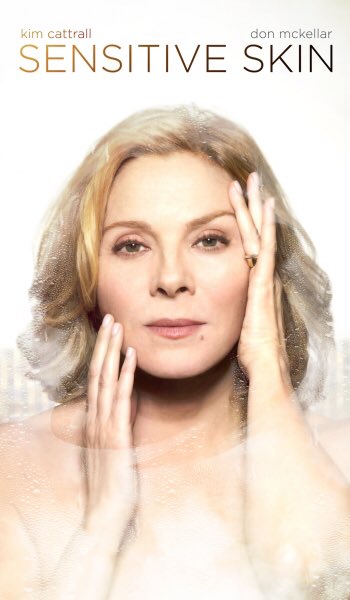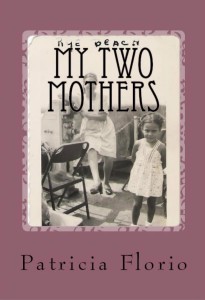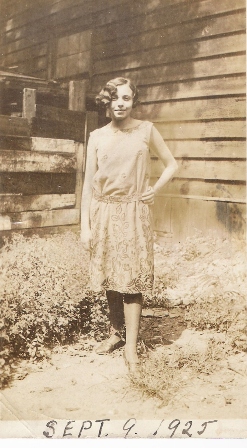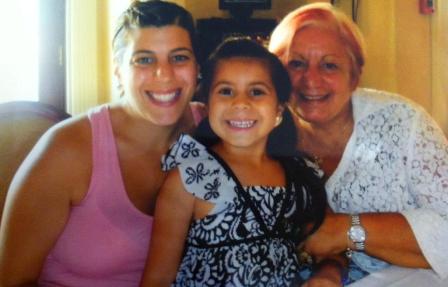
Can I still say Happy New Year in February? I’ve certainly found myself saying it to rather tanned people who have just returned from extended holidays. I only took one more week leave than usual, but I enjoyed this extra time off from work; especially since Bob and our friend, Mark, also had holidays. It was fun to have a friend from Brazil, Thiago, visit us. Visitors from overseas give you the chance to become unofficial ambassadors of your city or state. You may even visit for the first time attractions or parts of the city that hitherto were not on your radar. I find that I talk up random bridges (“Ooo, look a lovely bridge!”), gardens (“Ahh, a splendid garden!”), and even statues (“Look, it’s…well, actually I don’t know who the hell that is. But look, he’s near a lovely bridge”). There were also several Christmas newborns to meet, beaches to walk, and a helpful, if somewhat judgemental, Netflix offering me a long list of potential film and TV options based on previous viewing.
Bob and I tried a lot of the lunch bars and cafés that have sprung up all over the city, but are only open during the day. This endeavour got off to a shaky start when the two of us and our friend, Carlo, eagerly joined a line outside of one eatery. Our frustration at being told that it was hard to say how long the wait would be because “people eat food at different speeds” eventually gave way to bemusement when we noticed that people were sneaking past the confused waiting staff to sit at recently-vacated tables. Felled by this culinary war of attrition, fought with retro knives and forks, we retreated and ended up at a fast-food Mexican joint.
Even when keeping busy, the end of one year and beginning of another is often a time for self-reflection. Psychologists Shelley Duval and Robert A. Wicklund proposed in their 1972 book, A theory of objective self awareness (New York, Academic Press), that while attention can be directed inward or outward at any given time, we’re usually more outward focused because “the environment is normally a strong enough stimulus to draw attention to itself”. To put it another way, we’re the “subject” of our existence and everything and everyone else is an “object”. Please don’t take this explanation to mean that I’m objectifying you all; and frankly, on more than one occasion, I’ve made enough of a spectacle of myself to warrant your scrutiny. In psychology studies stemming from this theory, mirrors or recording people on film and then playing the tape back to them are often used to move a participant’s attention from the environment to himself or herself. I think a new year is just as effective a prompt for looking inward.
While I’ve never really been one for New Year’s resolutions, I am not immune to the focused self-reflection that comes with this time of year. Or any time of the year, really. You want to talk about me in August? I’m your navel-gazing man. What is it about the impending start of a new year that drives self-reflection, and the want to end or begin chapters? I suppose we think in terms of beginning-middle-end with many things, and years are no different. We reflect on what we did, what we haven’t done, and what we’d like to do in the future. More than anything, though, I think that a new year is such an alluring prospect for many people because of the promise it offers of putting a line in the sand; of breaking away from self-imposed boundaries, or the boundaries that we allow others to put around us. No one likes being put in a box. And yet, we have mental containers for everything.

One of the first topics I teach when introducing social psychology to undergraduates is the concept of schemas. It was one of the first social psychology topics I probably learned from my own lecturers: Lyn Leaney, Brian Gerner, and others; as well as texts such as Social psychology (Pearson/Allyn & Bacon) by Robert A. Baron, Donn Byrne, and Nyla R. Branscombe. Schemas are structures that organize our knowledge and assumptions about something (e.g. situation, person, social role), and are used for interpreting and processing information. For example, when we visit a restaurant we expect to wait for a table, to be seated, to be given a menu and a few minutes to choose an order, and so on. We are also likely to have schemas that organize our knowledge and assumptions about doctors’ visits, sitting in a library, shopping, and so on (these are event schemas or scripts). These schemas not only help us to know what to expect, but also direct our behaviours in these situations. We have schemas for ourselves, other people we know, “types” of people (the prototypical waiter, doctor, and librarian), occupations, social roles, specific social groups…you name it, we are a virtual Howard’s Storage World.
Schemas make life easier. They tell us what to look for or how to size up a situation or another person. But they can cause problems for that very reason because they don’t give anyone much wiggle room. Our impressions of others, in particular, are likely to persevere. Boxes by their very nature can store a lot of baggage. It reminds me of the LGBT metaphor of the closet being for clothes, and not for people. I agree with that wholeheartedly, unless it’s an Ikea closet; in which case, it can be used for clothes storage and to cause major rifts in any solid relationship, as you scream, “Why have we only got six of those screws? Oh, we’ll never put this KVIKNE together!”
We started watching Sensitive Skin starring Kim Cattrall and Don McKellar on Netflix in late December. In fact, we couldn’t wait and squeezed in watching the final episode of the first season before heading to a New Year’s Eve party. This television show really spoke to my point. Kim plays Davina, a former model who works part-time at a gallery. Davina is trying to figure out who she is, and grappling with whether you can make big changes in your life. I loved what the series said about the drift of life leading you a certain way versus going out and trying to get what you want; or at least trying to figure that out. Davina’s dilemma is really how to be free of both the gaze of others and their reflected expectations, and to be honest with herself about whom she is and what she wants so that she can act on it. In one episode, Davina tells her neurotic writer husband Al something that she’ll come to realise relates to her as well: “You’ve got a perfectly good brain, but it’s blind. It’s full of nerves and doubts and fear … Just be the Al you want to be, and you’ll be him”.

Perhaps Davina doesn’t fully realise the parallels with her own situation, but she is right about Al. Psychology research tells us we often infer who we are and how we feel by what we do. But this intense soul searching to figure out who exactly we are can be difficult. Duval and Wicklund believe that self-directed attention can result in negative emotions if we find our behaviours and other parts of our self fall short of our own standards. When we experience negative pangs as a result of discrepancy, we may try to change our behaviours to fit with our standards. This may play out in the push to shed a few kilos, an unsatisfying job, or a relationship; give up smoking; travel; or perhaps – if there was a video camera at the New Year’s Eve party – not to ever fall into the punch bowl again. We may also come up with new standards, or avoid self-reflection all together. Psychologists would say that humans are rather averse to adverse emotions, and so it’s understandable why we may choose the final option.
I’ve found that at times of self-imposed or externally-driven self attention, my conception of who I want to be or who I see myself as is not exactly where I would like it. My tendency, like many other people, is to feel shame, and avoid that painful mirror. Or, I lure myself into that false sense that I have achieved a homeostasis in personality and evolved to an end-point where, I’m not that person anymore. But if I did make a New Year’s resolution in recent years, it was to be more honest with myself and try to figure out what I really wanted. On my navel gazing this year, I found that I was closer to where I wanted to be, and there didn’t have to be such an upheaval of self-concept. I think that is in big part due to this blog. Anytime I feel in a box, I find writing helps me to shake it off. Writing is a very satisfying creative outlet for me, as well as a way to figure out exactly what it is I’m thinking.
I would like to thank my 2015 interviewees: Gavin Harrison, Patricia Florio, and Jonathan Daly. They gave freely of their time and really did what I have written about. Self-reflection can be challenging, difficult, fun, and a whole range of other things. I appreciate the effort they put into it. I hope that it was as useful to them as it was to me. I would also like to thank Bobby Vee and his family for support of my writing about their family in my If I Needed You post; and those who participated in my Sunday, You’re Looking Neat in Your Tidy Attire Q&A: Rutanya Alda, Simone Buchanan, Gabrielle Carteris, Cazwell, Tim Ferguson, Tim Matheson, Breckin Meyer, Lucas Neff, Chris Noel, Tatum O’Neal, and Billy Warlock.
I’m working on a couple of new projects and look forward to sharing them with all of you when I can.
Sometimes I write all day or even over an entire weekend. I love being in that type of flow. However, I find that I can start to act just a little bit bizarre and need some actual human interaction. I found this to be the case a couple of weeks ago, and was pleased that Bob, our friends Julie and Carlo, and I choose to go to one of our favourite pubs known for its friendly atmosphere and extensive beer list. We listened to a lovely singer perform original pieces and covers. One of her originals was about an elderly man. After the song, she intimated that she may be killing him off in a sequel unless the audience had other ideas. Buoyed by courage (and probably our tab at the bar), a sense of duty compelled me to fish for a stay of execution for her fictional protagonist. At the end of the singer’s set, I excitedly went up to her and offered, “Perhaps…he could go to Europe!” She was very sweet, but I sensed that she was thinking, He has two Hefeweizen, and all of a sudden he thinks he’s Carole King.
In writing this, I decided to return to one of my favourite theorists: Gordon W. Allport. I considered his trait theory at length for one course I completed in my first year as an undergraduate. In his 1955 book, Becoming: Basic Considerations for a Psychology of Personality (New Haven, Yale University Press), he wrote, “there is also much growth that takes place only with the aid of, and because of, a self image. This image helps us bring our view of the present into line with our view of the future”. I guess what I take away from all this New Year reflection is strive to be who you want to be. You just can’t be Carole King – that’s already taken.
 One of my favourite opening lines in a novel is from The Go-Between (1953) by L. P. Hartley: “The past is a foreign country: they do things differently there”. In a later introduction to the book from August 1962, Hartley wrote about what shaped his story of an older man reflecting on his past. It was largely one summer in 1900 that left such “a mark on my memory” at only four-and-a-half years of age: “From then on, for many years, I always hoped that the long succession of hot days would be repeated, but unless my memory betrays me it never was, in England at any rate, until 1959”. He concluded that, “I didn’t want to go back to it but I wanted it to come back to me, and I still do”.
One of my favourite opening lines in a novel is from The Go-Between (1953) by L. P. Hartley: “The past is a foreign country: they do things differently there”. In a later introduction to the book from August 1962, Hartley wrote about what shaped his story of an older man reflecting on his past. It was largely one summer in 1900 that left such “a mark on my memory” at only four-and-a-half years of age: “From then on, for many years, I always hoped that the long succession of hot days would be repeated, but unless my memory betrays me it never was, in England at any rate, until 1959”. He concluded that, “I didn’t want to go back to it but I wanted it to come back to me, and I still do”.
